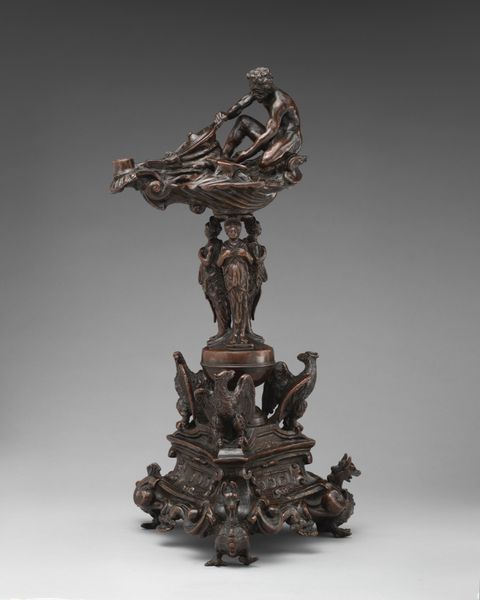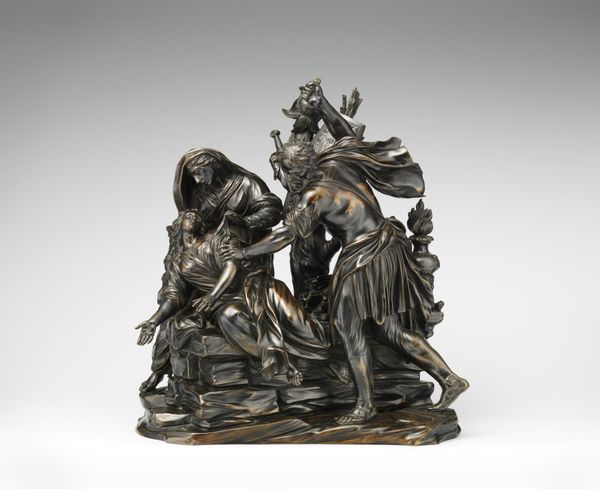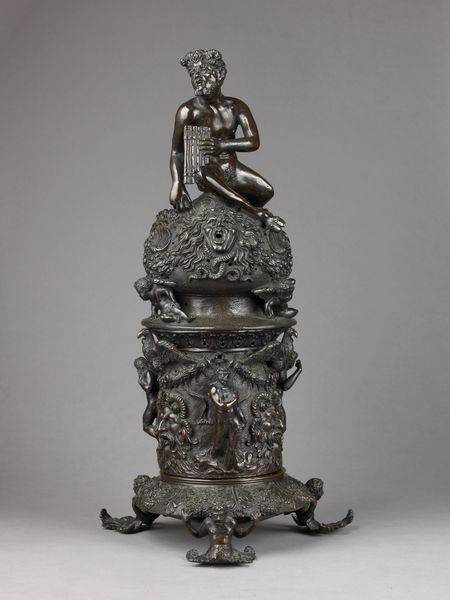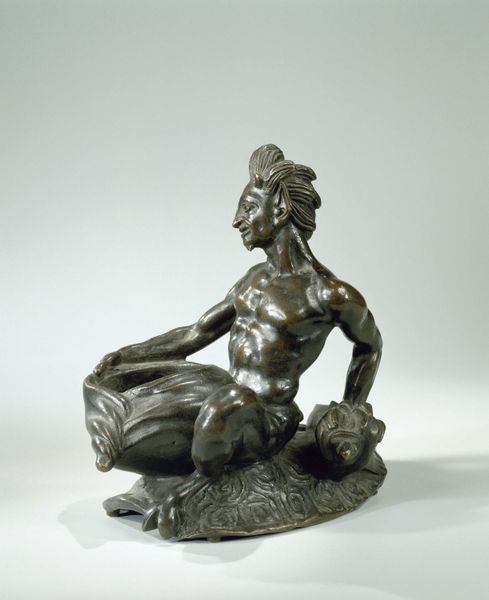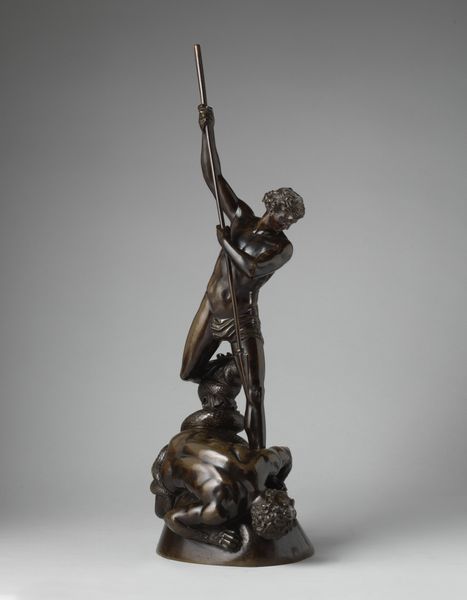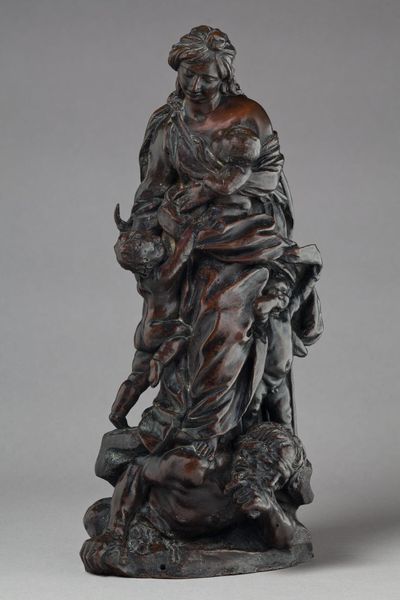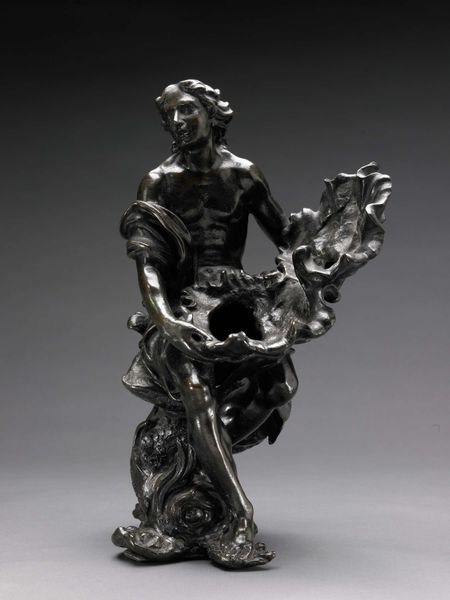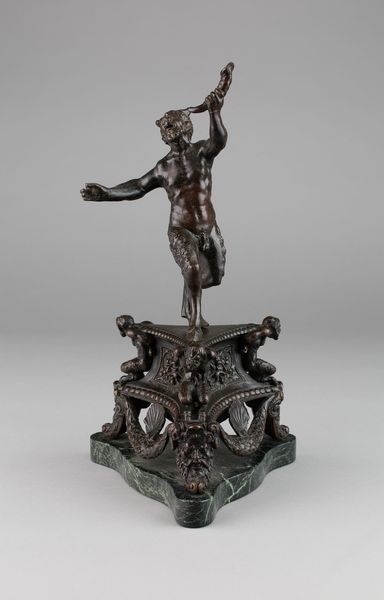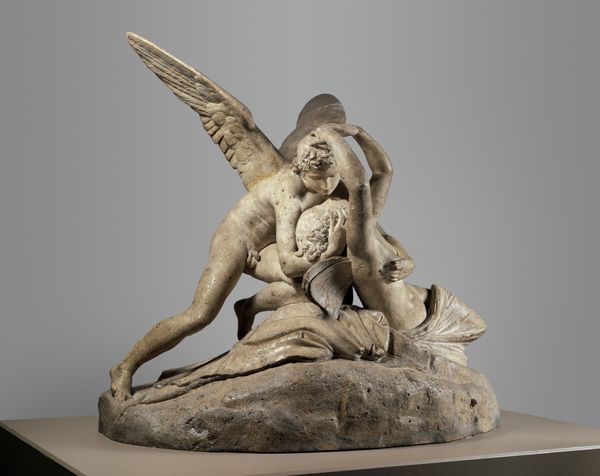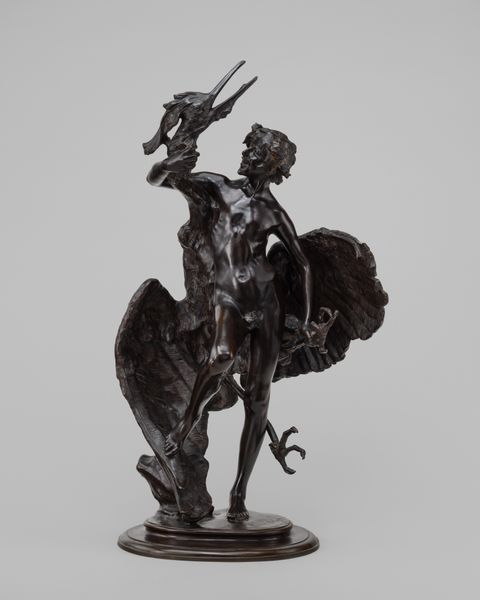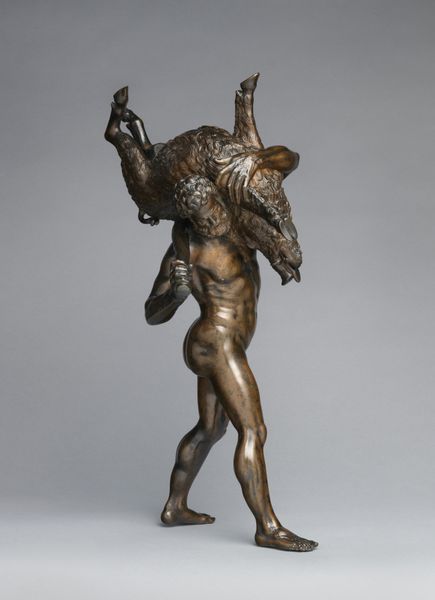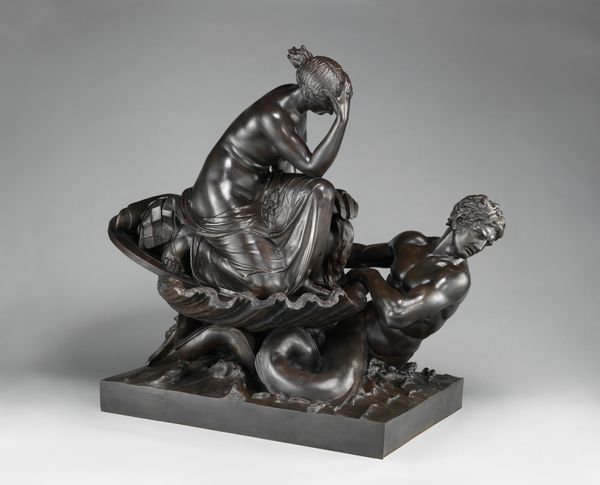
Dimensions: Overall: 20 3/4 × 16 1/4 × 8 in. (52.7 × 41.3 × 20.3 cm)
Copyright: Public Domain
Editor: This is "Clock with Father Time" created in 1863 by Albert-Ernest Carrier-Belleuse. It’s currently housed at the Metropolitan Museum of Art. Carved from wood, it features Father Time with wings and an hourglass perched above the clock face. There are cherubs, too, at the top and bottom of the scene. The clock appears so imposing and seems to address the passage of time itself. How should we understand the cultural moment that led to this? Curator: This piece speaks volumes about the anxieties of the 19th century. Notice how Father Time isn’t just a neutral symbol. He's burdened, almost wrestling with the very concept of time, clinging to his hourglass. Given the rapid industrialization and societal shifts occurring then, the clock embodies how time became an increasingly oppressive force, shaping labor and dictating social rhythms. It suggests that not all shared the celebratory attitude towards progress that we might expect, do you see that struggle reflected in the figures and allegory presented here? Editor: Absolutely, the figures don't look carefree; instead, they appear almost trapped. So it's not just a decoration, but also a commentary on these huge changes taking place at the time? Curator: Precisely. Consider, too, who this clock was made for. Such a detailed carving would have been commissioned by the upper classes, likely those benefiting most from the very system the clock subtly critiques. Doesn't that suggest a kind of internal conflict, a questioning within the privileged about the cost of "progress" they enjoy? Editor: That’s fascinating. It makes me think about how objects we consider beautiful or decorative can also be powerful tools for questioning social norms. Thanks for highlighting the connection between the personal experience of time and broader power dynamics. Curator: And thank you, this made me think about how easily decorative art can be used in complex ways to express various ideologies and experiences across different social classes.
Comments
No comments
Be the first to comment and join the conversation on the ultimate creative platform.
